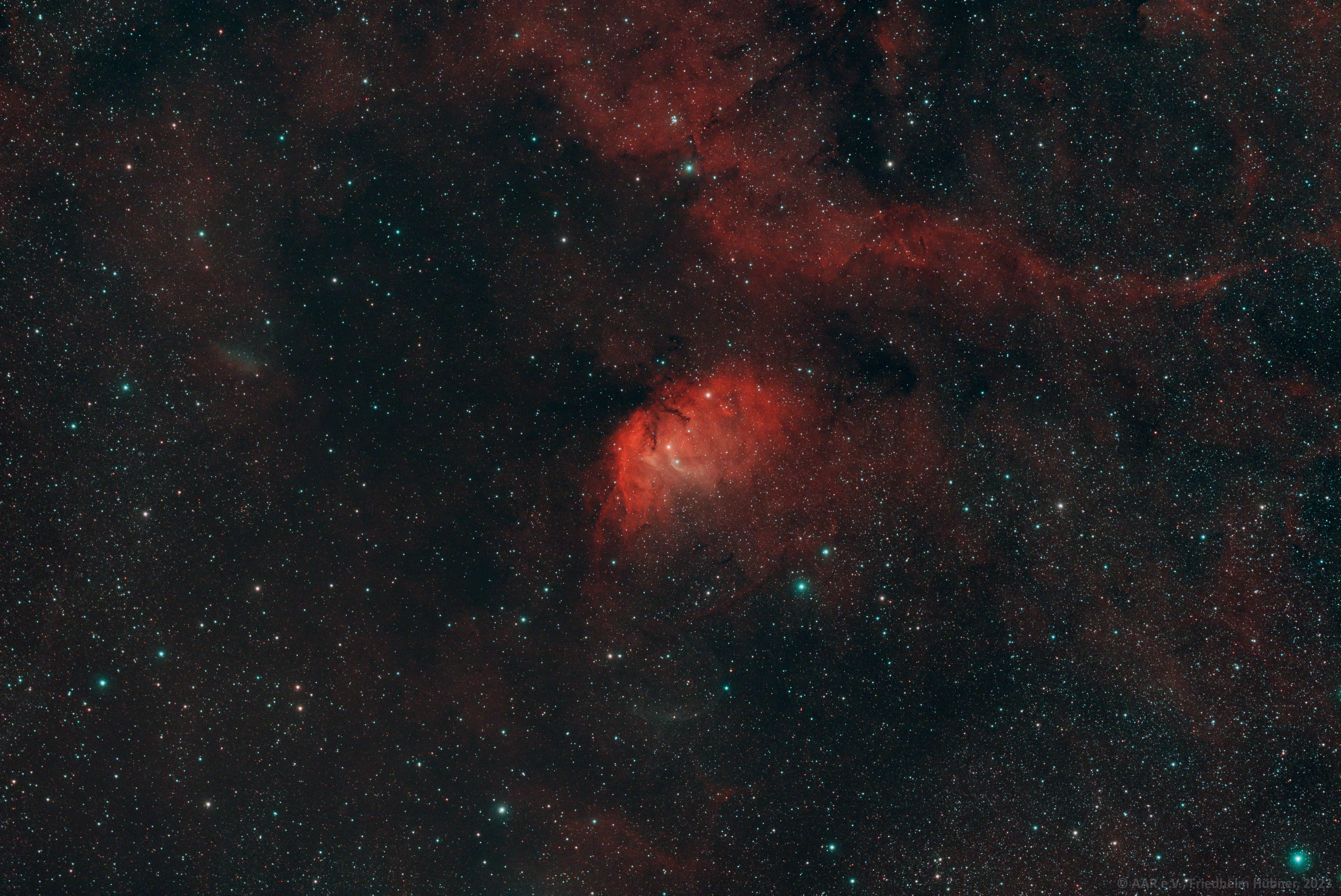|
Sh2-101 (Cyg) and Cygnus X-1

Click on the image for a larger version
| Date/Site: |
6. and 10. September 2023. Remote observatory on the AAR club's site in Presberg |
Exposure/
Filter: |
Optolong L-eXtreme Dualbandfilter: 81 x 300 seconds (-10°C) |
Camera/
Optics/
Instrument: |
ASI2600MC Pro on TMB APO 105/650 at 650mm on Gemini 41-mount of the AAR |
|
Data collected by Philipp Kuhlmay
Data acquired remotely with N.I.N.A.,
Off-Axis-Guiding with Lodestar,
Focussing with USB-Focus,
Calibration and processing: PixInsight 1.8 |
The emission nebula called the „Tulip-nebula“ lies in a very dynamic star-building area in the constellation Cygnus.
Near the western filaments of the nebula lies the microquasar Cygnus X-1, a double star, formed by a black hole with 15 solar masses and a O9.7 Iab supergiant with 21 solar masses. Cygnus X-1 is one of the stronges X-ray sources in the sky. The black hole accretes matter from its companion star on to an accretion-disc which emits higly energetic radiation. A pair of relativistic jets, arranged perpendicularly to the disk, are carrying part of the energy of the infalling material away into interstellar space thereby creating the bowshock we see.
The image with a colour camera being especially sensitive in the green through a modern dualband filter clearly shows the bowshock as a bluegreen bow.
A picture made with the 10"-Newton can be found here.
|
© Friedhelm Hübner, last revision: 02.12.2025